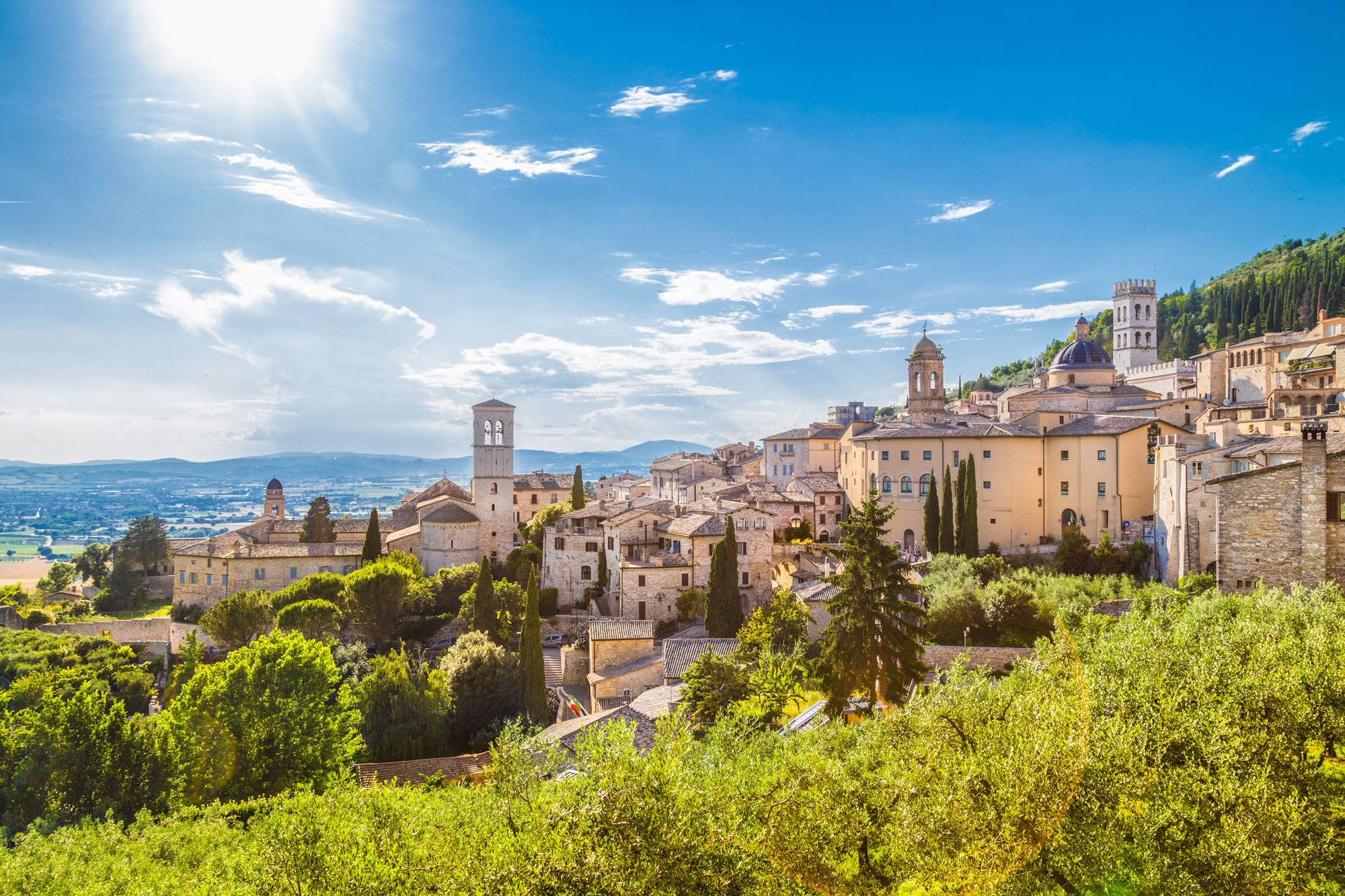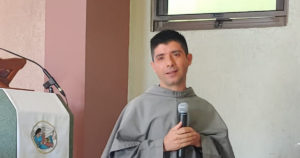Friar Peter Damian Massengill received a phone call in the middle of night from his provincial, Friar Wayne Hellmann, who was attending the General Chapter in Rome. The Minister General wanted to know if Friar Peter Damian would be interested in becoming the first General Delegate for Justice and Peace in the Conventual Franciscan Order with an office in Assisi. Here’s a reflection from that time…
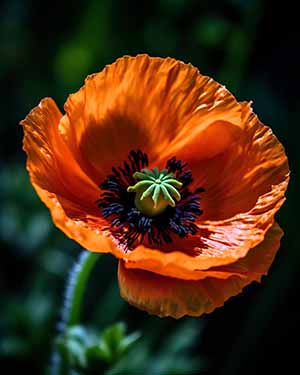 It was a beautiful spring day in May of 1995. The burnt orange poppies blanketed the fields of Assisi, and for the first time, leaders of Christian religions from all over Europe were gathered there to plan the Second European Ecumenical Assembly. Many people remembered well the First Assembly held in Basel, Switzerland, and its, soon to become famous, title: Justice, Peace, and the Integrity of Creation. As interesting as that first assembly was, there was much more excitement over this one, since all “opened up” Europe would be able to participate in Graz, Austria in June of 1997. The theme that became obvious was, of course, Reconciliation: gift of God and source of new life.
It was a beautiful spring day in May of 1995. The burnt orange poppies blanketed the fields of Assisi, and for the first time, leaders of Christian religions from all over Europe were gathered there to plan the Second European Ecumenical Assembly. Many people remembered well the First Assembly held in Basel, Switzerland, and its, soon to become famous, title: Justice, Peace, and the Integrity of Creation. As interesting as that first assembly was, there was much more excitement over this one, since all “opened up” Europe would be able to participate in Graz, Austria in June of 1997. The theme that became obvious was, of course, Reconciliation: gift of God and source of new life.
The Friars of the International Franciscan Center (see footnote) were part of hosting this meeting, and the role we played was typical of the ministry we offer. The actual meetings were taking place at the Domus Pacis conference center in Santa Maria degli Angeli, but one afternoon we had the opportunity to invite two of the participants up the hill of Assisi to visit our Center.
The Orthodox Patriarch of Romania and the Roman Catholic Bishop from the same city knew of each other but were never “permitted” to meet together during the years of oppression.
We took the opportunity to put them in the same car and bring them up to the Center. After showing them around, we ended up in our little community room, and offered something to drink. A beer sounded good to both.
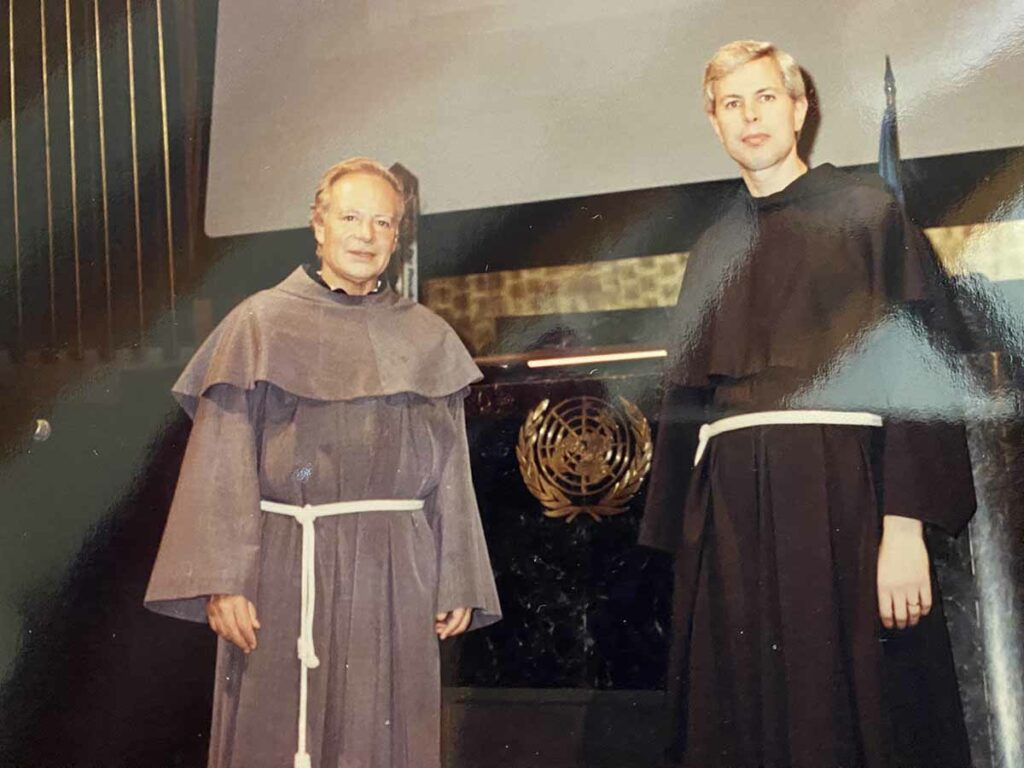
We had a wonderful conversation throughout the afternoon, even missing the general session that was scheduled. As a result, they really enjoyed each other, thanked us for “accidently” bringing them together, and maintained a closer dialogue and cooperation in Romania.
This story, along with some better planned events such as the two visits of Yasir Arafat, and a three-day workshop on non-violent ethics for some of the leadership of NATO, captures the scope of what we consider a Franciscan approach to non-violent resolution. It is basically invitation. We use it because it worked for Jesus.
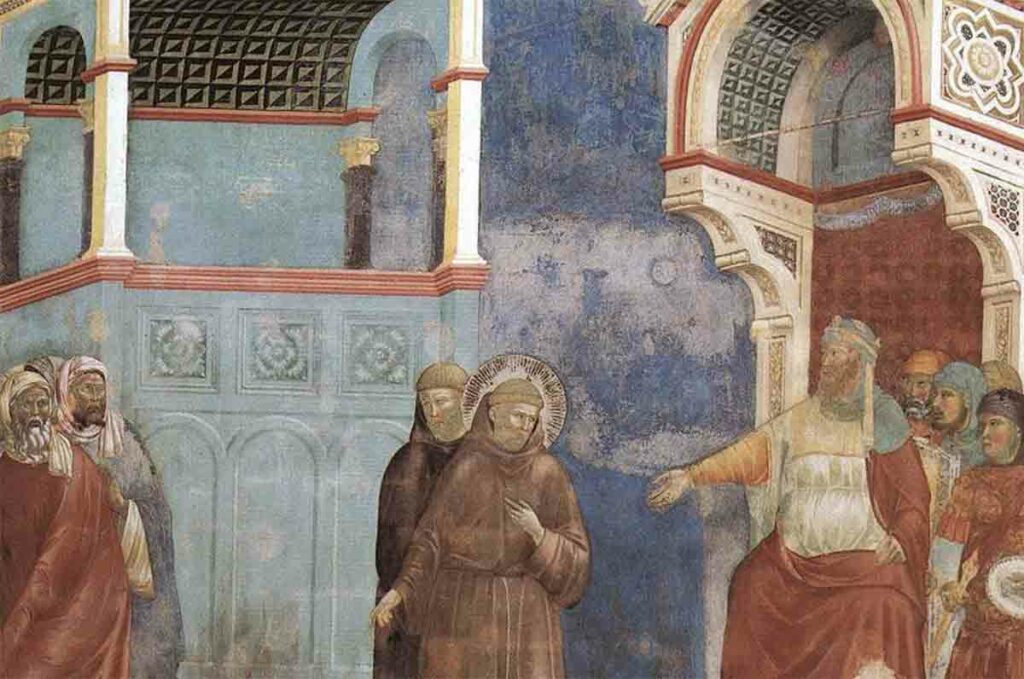
Someone asked us once just how we would describe our work. My response was to call it “Track Two Diplomacy.” The person misunderstood what I said and repeated with surprise, “Crap-Shoot Diplomacy!” Thinking about this, both would be correct.
As Franciscans, we do not see ourselves on the cover of “Time” magazine or listed at the head of international delegations. If we can bring individuals together to talk with one another in a place where they feel safe to share the desires of their hearts, we have often found that “people at the top” can really see a larger picture and want creative options. If they can find some solutions “behind the scenes,” then they usually have professional people working for them to “make it happen.” At least this has been our experience with government, corporations, even Churches – which often prove the most difficult since “God is on their side.”
Check back soon for Part 2 – “The Ten Commandments of Peacemaking.”
-friar Peter Damian Massengill OFM Conv.

